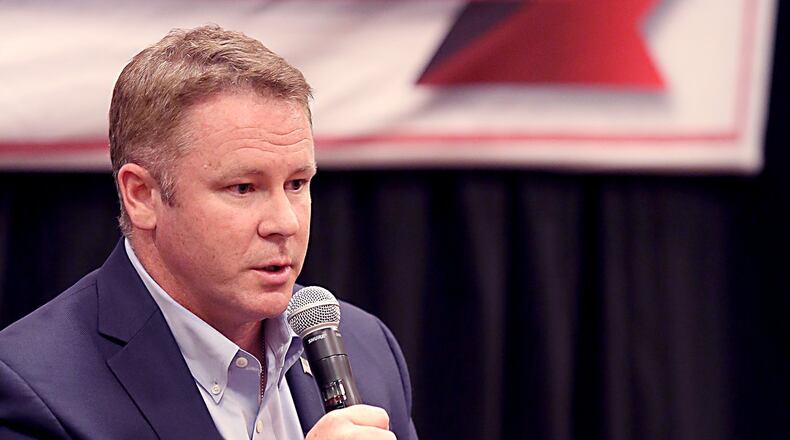“It doesn’t change the spending on the social safety net at all,” said Davidson, who represents the 8th Congressional District in Southwest Ohio. “It’s intended to have the same mission with fewer programs.”
Nearly $850 billion are spent on social and welfare programs, such as Supplemental Security Income, Medicaid, the State Children’s Health Insurance Program, employment and training programs, Pell Grants, and Head Start and Early Head Start.
The intent of Davidson’s bill is to increase deficiencies and make it easy for organizations and agencies that draw from a number of federal programs, he said.
The idea for the bill came from him noticing the vast number of the social safety net programs and believing there’s likely some duplication and redundancies. And similar to the Defense Base Closure and Realignment Commission, the Welfare Benefit Reform and Alignment Commission would eliminate unnecessary red tape.
Davidson’s bill calls for the creation of a Benefit Reform and Alignment Commission, which he said would be a 50-50 bipartisan group that would evaluate the programs and make recommendations to Congress.
“We want to have a goal of continue what works and consolidate or eliminate what doesn’t,” he said. “The federal government should be more efficient in providing help.”
But fewer programs may not necessarily be a good thing, said Shared Harvest Executive Director Tina Osso, who sits on the local Emergency Food and Shelter Program board which is managed by Federal Emergency Management Agency. FEMA was consolidated under the Department of Homeland Security, and Osso said that consolidation has impacted when Butler and Warren counties receive its federal funding.
“It sounds good to consolidate staff and administrative overhead, and I’m sure there are ways to be more cost-effective, but you shouldn’t take a hatchet that needs a scalpel,” she said.
Osso said the EFSP is about 20 months behind in issuing funding, and funding for the Nov. 1, 2015 to Oct. 31, 2016, cycle hasn’t been issued and the latest cycle started this past Nov. 1.
“In order for funds to be released (for the new cycle), all recipients must be cleared from the previous funding cycle,” she said.
Osso said the two counties receive between $250,000 and $500,000 a year based on need, and “we’re not into March and no funding has been released.”
“So what happened when you consolidate and reduce staff? At least in my experience is that it causes tremendous delays,” she said.
Jeffrey Diver, the executive director for Supports to Encourage Low-income Families, said while reducing bureaucracy while maintaining current levels of funding and support “would be a positive step,” he’s not completely sold until he learns more.
He has too many questions that needs to be addressed before he would say if he’d support the legislation, or not, such as, “Could consolidation improve that safety net or would more people fall between the cracks?”
“My hope is whatever we do, it is not going to harm the most vulnerable people of our population, and those trying to improve their situation by moving out of low income,” he said.
About the Author

